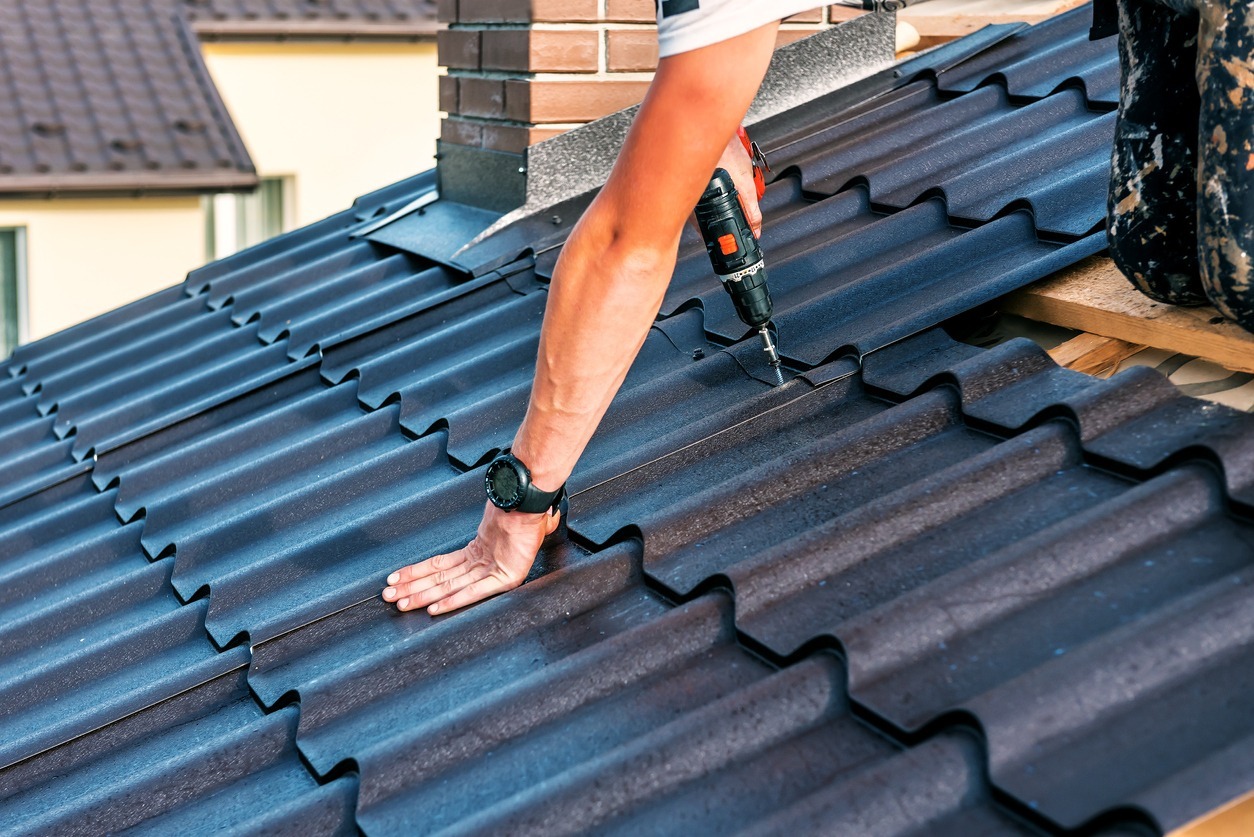Replacing your roof is a big home project. While the idea of a new roof is exciting, it can also come with some stress due to various factors. That’s why it’s important for homeowners to research every aspect, from the type of roofing material to the color of shingles and the contractor doing the work. We’ve compiled a list of helpful tips to guide you through the decision-making process.
Once you consider all those seemingly small details, you realize their substantial impact. And the many questions racing through your mind? Perfectly normal. Having these questions shows you care about your roof’s health, the value you get for a significant investment, and your family’s safety.
Here are some helpful dos and don’ts to remember when it’s time to replace your roof and install a new one:
Choosing the Right Material
Do explore different material choices
You don’t have to be stuck with the same old roofing material. When you go shopping, you look at all your options before deciding, right? It’s the same with housing materials. Roofing materials come in many types. Take your time and decide after thinking it through. Your contractor can give you expert advice if you need it. This is your opportunity to for a change and make smart upgrades. Options include asphalt shingles, metal, clay or concrete tiles, and synthetic materials.
The roof material is a significant consideration, so if you have problems with your old roof, perhaps it’s time to consider installing another kind. For instance, did you know that different materials and colors can affect how heat moves? If you had difficulty keeping your home warm or cold, perhaps there’s something you can do about the roof. Choose roofing materials that are suitable for your climate, budget, and architectural style.
Don’t skimp on quality
Investing in good roofing materials is an investment in your home’s future. Better shingles and roof components mean a strong and durable roof, even when the weather gets extreme. Don’t let cost be your only concern. Though it’s always wise to watch your spending – as roof installation is costly – going for the cheapest option isn’t always the smart move. You might end up paying more in the long run for repairs and replacements if you pick lower-quality materials.
When you choose cheaper materials to save money, you could end up shelling out more for fixes later on. That’s when you lean on your contractor’s advice. Stick to your budget, sure, but make sure you’re getting quality and value for your money.
Do choose the right shingle color
Imagine how your roof will look. Unlike a piece of furniture, a roof is here for the long haul. Roofs stay for 20 to 30 years (and metal roofs can last much longer), so when you’re getting a new one, choose shingles that suit your home. Make sure it maximizes your curb appeal.
Your contractor will show you various samples. They might even use a picture of your home to help you see how it’ll look. Take your time and pick what you genuinely like. It’s an important choice, so don’t rush it.
Do follow HOA guidelines
Some homeowner associations (HOAs) have strict guidelines for materials, colors, and style. It’s a bummer to invest in a new roof only to realize it doesn’t meet HOA standards. So, it’s smart to check in with your local HOA before you begin your project. That way, you’ll be on the right track from the get-go.
Don’t forget to factor in the weather in your region
When picking your roof materials, think about your local weather. If you’re in a snowy area, you’ll need different kinds of shingles compared to an area with high winds or tropical regions.
Do check wind and fire ratings
Many roofing materials come with ratings showing how they hold up against wind and fire. While not all brands have these ratings, it’s wise to go for a product that’s been tested. While not all companies advertise their ratings, choosing a strong material can give you peace of mind during unfavorable weather conditions.
Do consider an extra layer
Sometimes, adding a second layer to your roof can make it last longer. Installing appropriate underlayment materials, such as felt paper or synthetic underlayment, can provide an extra layer of protection against water infiltration. Ask your contractor if this is a good choice for your situation.
Don’t add layers without checking the structure
Don’t just add more layers without checking if your home’s structure can handle it. Before making any decisions about multi-layer roofing, test the strength of your home and roof. This is especially important if your contractor wants to put the new roof over the old one.
Don’t overload your house
While fancy clay tiles might look great, not all homes can handle the extra weight. Some homes are built for regular shingles, so test your home’s structure before choosing a heavy material.
Choosing the Right Contractor
To verify credentials
Contractors vary in quality, so check their references, credentials, reviews, and awards to give you a good idea of how excellent they are at their work. Make sure they’re licensed, bonded, and insured. You may skip huge costs on someone you know who’s handy, but hiring a professional is better. Don’t hesitate to ask them questions so you can get the roof you want. What’s the best roof for your situation? What are your choices? How long will the project take? Also, get an estimate before starting the job.
Do ask for references and ask them
To get to know your contractor, it’s best to hear from others. Read reviews online, ask people you know, and request customer testimonials from your contractor. You may also ask for a friend or relative who had a recent roof job that they were satisfied with. It’s key to make sure you’ve chosen the best team for your project.
To request a detailed estimate
When hiring a contractor, always discuss finances beforehand. You will have a budget, and you must find a service provider who can get the job done in that amount. You don’t want to choose a contractor who would say, “Don’t worry about it now,” when asked about the price.
In most cases, contractors only provide a rough estimate of the expected cost. Although helpful, estimates can be misleading, as people are often left with bigger bills due to additional expenses. So, it’s best to ask for a detailed cost estimate that covers materials, time, labor, potential added costs, and a projected start and finish date.
Don’t agree to take shortcuts
Contractors might try to save by using cheaper materials. Sketchy ones can try to act smart, but they would cut installation costs by opting for shortcuts on material expenses. Never compromise on essentials like felt paper, starter shingles, flashing, caulk, or proper sealants. Cutting on these can lead to costly future repairs.
Once they start doing the project, make sure to keep an eye on them. Check the materials they are using and their deliveries. Since you’re paying for the job, you have the right to monitor their activities. You want to avoid ending up spending thousands on roof installation and end up getting scammed.
Don’t forget other roofing details
While your contractors are working, ensure that your gutter system is properly installed and maintained. Improper drainage can lead to water backup, which can damage both the roof and the foundation. Also, check on their sealing and caulking around flashing vents and other penetrations. Proper sealing is essential to prevent water infiltration.
Preparations and Inspections
Do ensure to inspect your roof thoroughly
Take the time for a proper roof inspection. Don’t assume your entire roof needs replacement. Sometimes, minor repairs can extend its lifespan for several more years. Look for signs of wear, like curled shingles, missing parts, or decaying wood. Your local roofer can recommend necessary fixes if any issues are found.
To protect your yard
Roofing installation is an extensive process, and it may cause damage to your plants. Make sure your yard, as well as the plants and other stuff in it, remain safe during the roof work. Cover shrubbery, flower beds, and other landscape features like hot tubs, pools, and any vehicles in the driveway with a tarp. While most contractors do this step, shield them from debris yourself if your contractor does not.
Do prepare your house
Construction is a messy job, and when your roof is being repaired or installed, expect a certain amount of debris to fall into your house. Besides clearing the yard, take anything off your walls that may get knocked off by the hammering, pounding, and other vibrations that tools may cause. Remove pictures, hanging mirrors, and art from walls, and pack away fragile items that may fall from shelves before the roofing project starts.
Do not allow children to play near the construction area
Keep children and pets away from the work area throughout the project. Tell them to steer clear of some areas of the house and yard for a while. Falling materials and loose nails can cause injuries. This tip isn’t just for children – adults must also steer clear of their worksite to be safe. Remember, it’s always better to be too safe than sorry.
Do check materials
When materials arrive at your site, inspect them to confirm they match what you ordered – new, high-quality materials. Ensure you’re getting exactly what you paid for.
Don’t allow blocking of the ventilation
Don’t let your roof contractor block essential ventilation systems during roofing. This could lead to issues like ice dams or overheated/melting shingles that shorten the lifespan of your roof.
Do keep hazards away from areas that receive traffic
Regularly check and remove roofing nails, especially from areas like driveways, sidewalks, and patios, where there’s a risk of harm to anyone, especially to children, pets, or vehicles.
Do keep a tidy worksite, especially at the end of the day
Always maintain a clean worksite during the day and especially before wrapping up. Your contractors must properly dispose of packaging materials, old shingles, and excess pieces. Store your tools and equipment securely overnight for both safety and security reasons.
Conclusion
In roof installation, getting the right materials, following safety rules, and keeping things neat are essential. Just as you wouldn’t skip a step in a recipe, don’t skip these dos and don’ts. They can help ensure your roof will be solid and everyone will be safe. So, when it’s time for that new roof, remember these simple guidelines to ensure everything fits perfectly.



